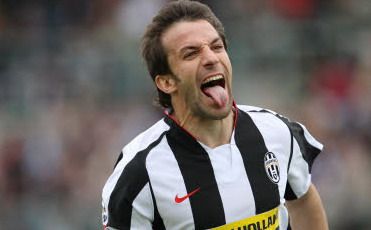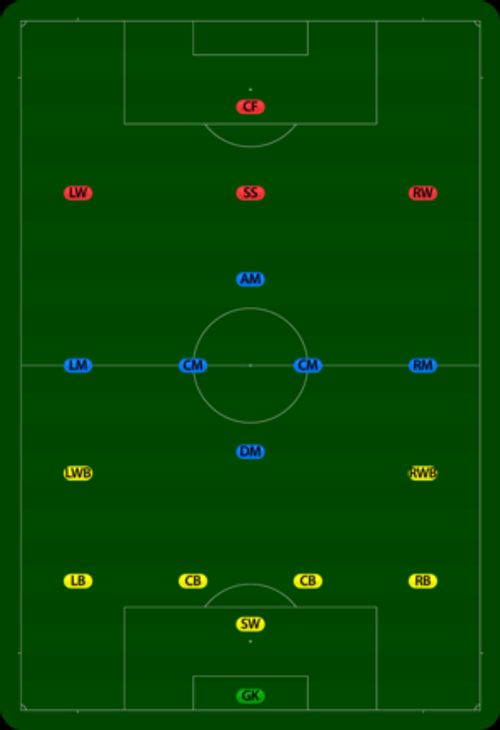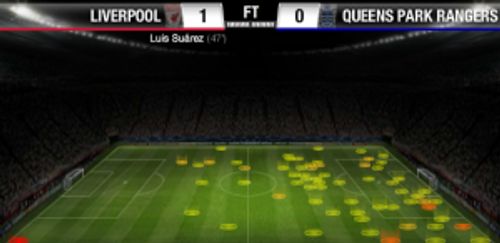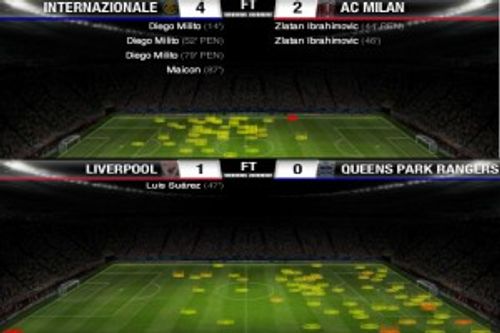
The fall of the classic trequartista
Trequartista(n) – A is a player who is fielded just behind the strikers- Alessandro Del Piero is such a player. They are not out and out strikers and they bring an element of fantasy to the game – invention, innovation and inspiration. They are usually the chief orchestrators of their teams, known for their defense splitting passes.
The trequartista is an Italian word, which literally means footballer who plays in the 3/4 of the field – and hence the name.
The brain and the lifeline of a team’s attack, the Trequartista has always been the standout position in all great teams of the ‘Il Calcio’ - Be it Zidane of Capello’s Juve, or Rui Costa and Kaka of Ancelotti’s Milan.

A classic trequartista.
The position of the Trequartista was brought into prominence by the Hungarian side led by Honved – and later Real Madrid’s legendary figure – Ferenc Puskas. And since then, it was gracefully adopted by World Football – The Trequartista soon became the blueprint of the great sides that graced football.
Before I proceed further in carrying out the postmortem of the death of these genii, a proper distinction between an Attacking midfielder and a Trequartista has to be made.
“An attacking midfielder is a central midfielder who is stationed in an advanced midfield position, usually behind the strikers. These players typically serve as the offensive pivot of the team. This specialist midfielder’s main role is to create goal-scoring opportunities using superior vision and skill. The attacking midfielder is an important position that requires the player to possess superior technical abilities in terms of passing and, perhaps more importantly, the ability to read the opposing defence in order to deliver defence-splitting passes to the strikers.” – Wikipedia.
The distinction between an attacking midfielder and a trequartista could become a bit vague. If it were to be put in the simplest of terms – All Trequartistas are Attacking Midfielders, but all Attacking Midfielders aren’t trequartistas.

The 'AM' denotes the Attacking Midfielder. The 'SS' denotes the Trequartista.
Clearly, a Trequartista plays in a relatively advanced position compared to the ‘Attacking Midfielder’. For instance, Wesley Sneijder is an attacking midfielder, whereas Francesco Totti is a trequartista. The literal translation for a Trequartista could be a player who plays in the hole – Between the opposition’s midfield and defense.
The Trequartista are a dying breed, with each passing day they are passing into the dusk of prominence. The main reasons for this downfall are :
1. The emergence of the 4-4-2 and the 4-3-3 :
The spread of the 4-4-2 was the first big step in the demolition of the trequartista role. The blueprint of English football puts emphasis on creativity from the wide areas, as two conventional box to box midfielders handle the midfield, and two big center forwards upfront to finish of the meals provided by the wingers. Thus, the 4-4-2 does not have room for the ‘player in the hole.’ Of late, Manchester United and Tottenham have pioneered the 4-4-1-1, in which 1 of the two strikers plays in the hole, Rooney for United and Van Der Vaart for Spurs. But if their roles were to be put under the microscope, one would notice that neither Rooney nor Van Der Vaart are trequartistas.
The 4-3-3 on the other hand hand, is another ‘anti-trequartista’ formation – a destroyer in front of the back 4, with two conventional central midfielders running the show in the park. Two wing forwards hugging the touchline, cutting inside provide the impetus in attack with the center forward converting all chances with utmost uplomb. Barcelona, Arsenal and many other sides have made the 4-3-3 a blueprint of sorts of beautiful football. But even this formation does not require a trequartista to weave his magic wand on the opposition defense.
2. Emergence of the withdrawn Attacking midfielder :
With the onset of midfield-oriented systems, the game has become a graveyard for the specialists. The dawn of the 21st century has brought along with itself, the invention of the withdrawn attacking midfielder, which has resulted in the mass unemployment of trequartistas around the world. A ‘Withdrawn Attacking Midfielder’ or the archtypical ‘midfield dynamo’ of the present era is pretty much the ‘X-Factor’ of a team. Brilliant in attack, the ‘Mr X’ of a team is it’s heartbeat in attack. Another point to be noticed the ‘withdrawn Attacking Midfielder’ is that it keeps to help the shape of the team – the attacking player provides an extra layer of cover for the defending team.
3. Tactical Discipline – Close to zero.

Luis Suarez – rare survivor of a dying breed. (Click to enlarge)
Trequartistas, as mentioned offer zero tactical discipline. An in-depth understanding of the heatmap of Liverpool‘s Number 7 – Luis Suarez shall clarify understanding.
Point 1 – Notice the concentration of yellow zones in the area between the opposition’s defence and midfield, and around the 6-yard box. Exactly the regions from where the trequartista operates. The orange zones depict the high-concentration areas.
Point 2 – Notice the low frequency of yellow zones ahead of the attacking half. This shows the little or no support offered by the trequartista in defence.
So, what differentiates the classical trequartista from the ‘Midfield dynamos’?
A Trequartista offers Zero defensive stability – His Primary/Secondary/Tertiary job is to weave magic and split open the opposition defense line, and not protect walls. The withdrawn attacking midfielder, on the other hand, provides defensive cover too – dropping back and acting as the 3rd central midfielder when his team are on the back foot.

Compare and contrast the movements of Sneijder(top) and Suarez(bottom)
Arrigo Sachi, the mastermind of the Milan side of the 80?s, had once staked a claim that the next tactical revolution in the game, would be the conversion of the whole pitch into a midfield area.
“It’s become all about specialists. Is football a collective and harmonious game? Or is it a question of putting x amount of talented players in and balancing them out with y amount of specialists?” – Arrigo Sachi.
By this, Sacchi primarily pointed out the ‘cost’ incurred in having the ‘luxury’ of an attacker. For instance, a classic Trequartista like Kaka needs an enforcer like Makelele.
Further, Sacchi hoped for the elimination of specialists, in order to uphold the motto that - ”Football is a team game.” and in the course of time, one might not see a single specialist in the game.